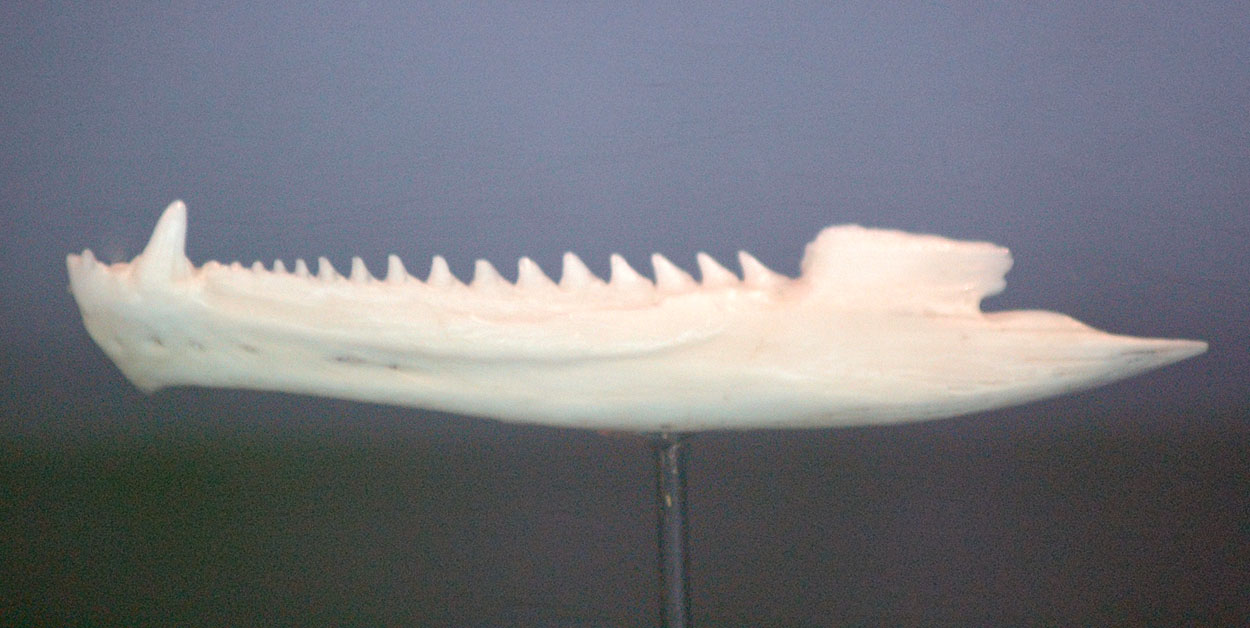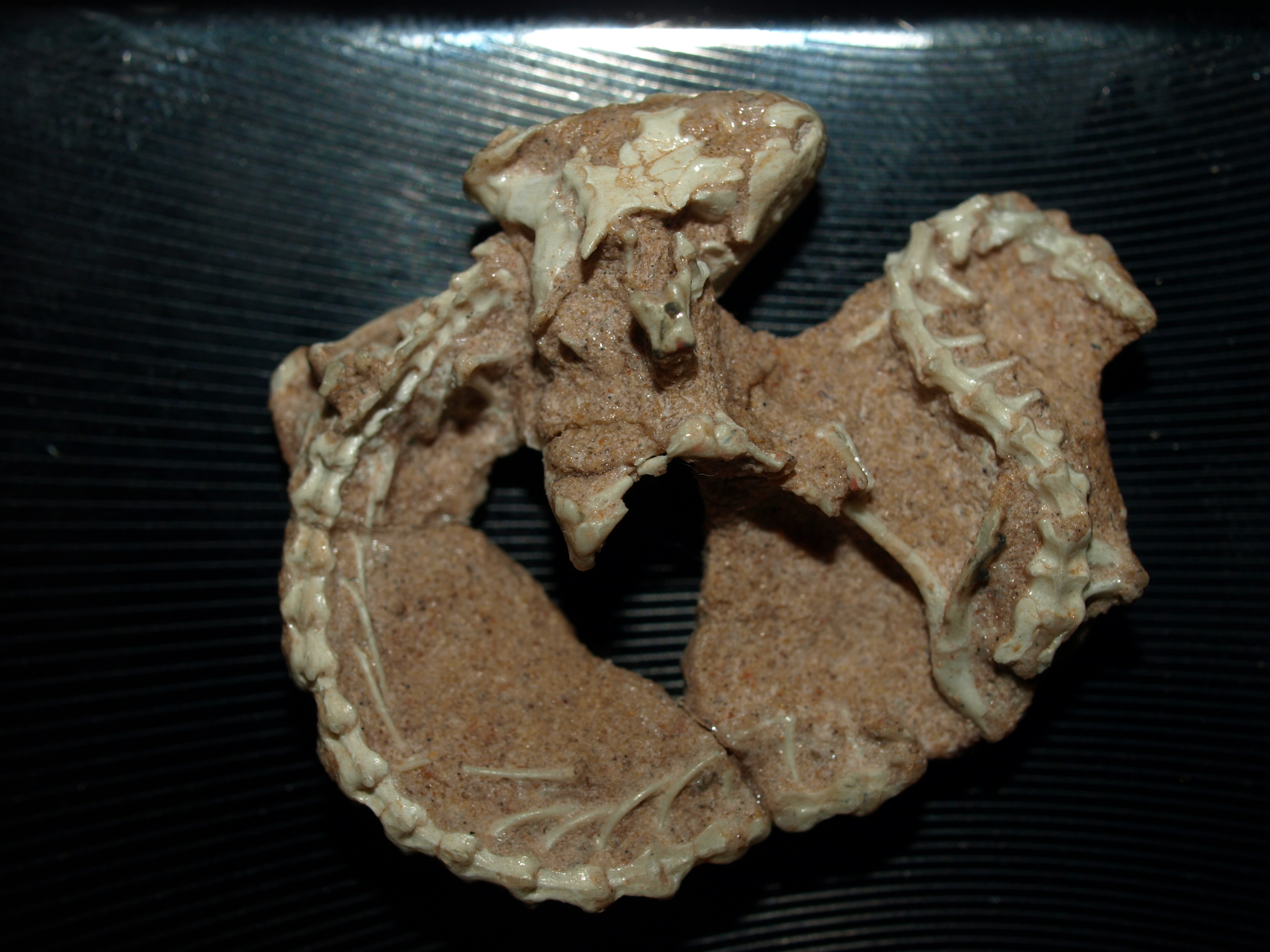|
Thecodont Dentition
Thecodont dentition is a morphological arrangement in which the base of the tooth is completely enclosed in a deep socket of bone, as seen in crocodilians, dinosaurs and mammals, and opposed to acrodont and pleurodont dentition seen in squamate reptiles. Notably, this appears to be the ancestral tooth condition in Amniota. This morphology was once used as a basis for the now-defunct taxonomic group Thecodontia Thecodontia (meaning 'socket-teeth'), now considered an obsolete taxonomic grouping, was formerly used to describe a diverse "order" of early archosaurian reptiles that first appeared in the latest Permian period and flourished until the end of t .... References Dentition types Archosaurs {{Vertebrate anatomy-stub ... [...More Info...] [...Related Items...] OR: [Wikipedia] [Google] [Baidu] |
Acrodont
Acrodonty (from Greek ''akros'' 'highest' + ''dont'' 'tooth') is an anatomical placement of the teeth at the summit of the alveolar ridge of the jaw, without sockets, characteristic of bony fish. Functionally, acrodont tooth implantation may be related to strong bite force. Acrodonty in the Animal Kingdom Squamata: Within squamate reptiles, acrodont tooth implantation is best known in Acrodonta and some species of amphisbaenians, though some snakes are also referred to as being acrodont. Acrodonta is unique in that the name of the clade is based upon this trait. Most other squamate reptiles have pleurodont dentition, though some snakes are occasionally described as having acrodont dentition. Rhynchocephalia: Acrodont tooth implantation is common within Rhynchocephalia, including ''Sphenodon''. Amphibia: Acrodont tooth implantation also present in some frogs and the temnospondyl ''Microposaurus ''Microposaurus'' (meaning "small eyed lizard"; from Greek , "small" + , "face" o ... [...More Info...] [...Related Items...] OR: [Wikipedia] [Google] [Baidu] |
Pleurodont
Pleurodont is a form of tooth implantation common in reptiles of the order Squamata, as well as in at least one temnospondyl. The labial (cheek) side of pleurodont teeth are fused (ankylosed) to the inner surface of the jaw bones which host them. The lingual (tongue) side of pleurodont teeth are not attached to bone, and instead are typically held in place by connective ligaments. This contrasts with thecodont Thecodontia (meaning 'socket-teeth'), now considered an obsolete taxonomic grouping, was formerly used to describe a diverse "order" of early archosaurian reptiles that first appeared in the latest Permian period and flourished until the end of th ... implantation, in which the teeth are set in sockets and surrounded by bone on all sides. References External links Tooth Implantation at palaeos.comOral Cavity of Reptiles - Anatomy and Physiology Dentition types Reptile anatomy {{Vertebrate anatomy-stub ... [...More Info...] [...Related Items...] OR: [Wikipedia] [Google] [Baidu] |
Squamate
Squamata (, Latin ''squamatus'', 'scaly, having scales') is the largest order of reptiles, comprising lizards, snakes, and amphisbaenians (worm lizards), which are collectively known as squamates or scaled reptiles. With over 10,900 species, it is also the second-largest order of extant (living) vertebrates, after the perciform fish. Members of the order are distinguished by their skins, which bear horny scales or shields, and must periodically engage in molting. They also possess movable quadrate bones, making possible movement of the upper jaw relative to the neurocranium. This is particularly visible in snakes, which are able to open their mouths very wide to accommodate comparatively large prey. Squamata is the most variably sized order of reptiles, ranging from the dwarf gecko (''Sphaerodactylus ariasae'') to the Reticulated python (''Malayopython reticulatus'') and the now-extinct mosasaurs, which reached lengths over . Among other reptiles, squamates are most close ... [...More Info...] [...Related Items...] OR: [Wikipedia] [Google] [Baidu] |
Amniota
Amniotes are a clade of tetrapod vertebrates that comprises sauropsids (including all reptiles and birds, and extinct parareptiles and non-avian dinosaurs) and synapsids (including pelycosaurs and therapsids such as mammals). They are distinguished from the other tetrapod clade — the amphibians — by the development of three extraembryonic membranes ( amnion for embryoic protection, chorion for gas exchange, and allantois for metabolic waste disposal or storage), thicker and more keratinized skin, and costal respiration (breathing by expanding/constricting the rib cage). All three main features listed above, namely the presence of an amniotic buffer, water-impermeable cutes and a robust respiratory system, are very important for amniotes to live on land as true terrestrial animals – the ability to reproduce in locations away from water bodies, better homeostasis in drier environments, and more efficient air respiration to power terrestrial locomotions, although they migh ... [...More Info...] [...Related Items...] OR: [Wikipedia] [Google] [Baidu] |
Thecodontia
Thecodontia (meaning 'socket-teeth'), now considered an obsolete taxonomic grouping, was formerly used to describe a diverse "order" of early archosaurian reptiles that first appeared in the latest Permian period and flourished until the end of the Triassic period. All of them were built somewhat like crocodiles but with shorter skulls, more erect pose and usually somewhat lighter. The group includes the ancestors of dinosaurs, pterosaurs, and crocodilians, as well as a number of extinct forms that did not give rise to any descendants. The term ''thecodont'' is still used as an anatomical description of the tooth morphology seen in these species and others. Definition Thecodonts are characterized by certain shared primitive features, such as the antorbital fenestra (an opening on each side of the skull between the eye sockets and the nostrils) and teeth in sockets. The name ''thecodont'' is Greek for "socket-tooth", referring to the fact that thecodont teeth were set in sockets in ... [...More Info...] [...Related Items...] OR: [Wikipedia] [Google] [Baidu] |
Dentition Types
Dentition pertains to the tooth development, development of teeth and their arrangement in the mouth. In particular, it is the characteristic arrangement, kind, and number of teeth in a given species at a given age. That is, the number, type, and morpho-physiology (that is, the relationship between the shape and form of the tooth in question and its inferred function) of the teeth of an animal. Animals whose teeth are all of the same type, such as most non-mammalian vertebrates, are said to have ''homodont'' dentition, whereas those whose teeth differ morphologically are said to have ''heterodont'' dentition. The dentition of animals with two successions of teeth (Deciduous teeth, deciduous, Permanent teeth, permanent) is referred to as ''diphyodont'', while the dentition of animals with only one set of teeth throughout life is ''monophyodont''. The dentition of animals in which the teeth are continuously discarded and replaced throughout life is termed ''polyphyodont''. The dent ... [...More Info...] [...Related Items...] OR: [Wikipedia] [Google] [Baidu] |


.jpg)

